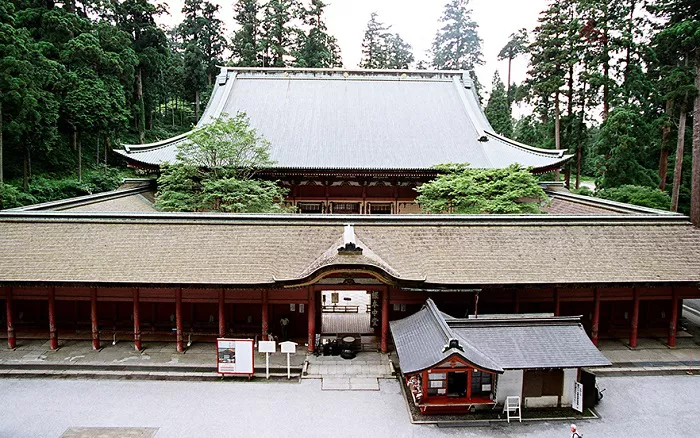Enryakuji Temple, perched atop the forested slopes of Mount Hiei, stands as a monumental symbol of Japan’s spiritual and cultural heritage. Founded in 788 by the revered monk Saichō, this temple complex is the cradle of the Tendai sect of Japanese Buddhism and has profoundly influenced the nation’s religious landscape. As a UNESCO World Heritage Site, Enryakuji offers visitors a profound journey through history, spirituality, and natural beauty.
Historical Significance: The Birthplace of Japanese Buddhism
Saichō’s Vision: In the late 8th century, Saichō established Enryakuji as a center for rigorous monastic training and spiritual enlightenment. His introduction of the Tendai sect from China marked a pivotal moment in Japanese Buddhism, emphasizing the universality of Buddha-nature and the potential for all beings to attain enlightenment.
Influence on Japanese Buddhism: Enryakuji became a nurturing ground for many influential monks who later founded major Buddhist sects in Japan. Notable figures such as Honen (Pure Land Buddhism), Eisai (Rinzai Zen), Dogen (Soto Zen), and Nichiren (Nichiren Buddhism) all studied here, earning Enryakuji the title of the “Mother Temple” of Japanese Buddhism.
Architectural Marvels: A Journey Through the Temple Complex
Konpon Chūdō (Main Hall): The spiritual heart of Enryakuji, this hall houses the eternal flame, a symbol of the temple’s enduring legacy. Reconstructed in 1642 after being destroyed in 1571, it showcases traditional Japanese architectural elegance.
Amida-dō: Built in 1937, this hall enshrines a statue of Amida Buddha and offers a serene atmosphere for contemplation.
Shaka-dō: Located in the Saitō area, this hall is dedicated to Shakyamuni Buddha and is one of the oldest structures in the complex.
The Three Areas of Enryakuji: Tōdō, Saitō, and Yokokawa
Tōdō (Eastern Pagoda): The central area of Enryakuji, Tōdō houses the main hall and serves as the primary site for religious ceremonies and pilgrimages.
Saitō (Western Pagoda): A short walk from Tōdō, this area offers a tranquil environment with historic halls and the mausoleum of Saichō.
Yokokawa: The most secluded of the three areas, Yokokawa provides a serene setting for meditation and reflection, with its main hall partially built on a slope supported by pillars.
Spiritual Practices and Experiences
Kaihōgyō (Marathon Monks): Enryakuji is renowned for its ascetic monks who undertake the rigorous practice of kaihōgyō, involving long-distance walking meditations over 1,000 days, symbolizing spiritual endurance and discipline.
Temple Stay and Activities: Visitors can immerse themselves in monastic life through temple stays at Enryakuji Kaikan, participating in activities such as candlelight meditation, incense making, calligraphy, and sutra chanting.
Natural Beauty and Seasonal Highlights
Autumn Foliage: The temple’s location on Mount Hiei offers breathtaking views of autumn leaves, attracting visitors seeking the vibrant colors of the season.
Panoramic Views: From various points within the complex, visitors can enjoy panoramic vistas of Kyoto and Lake Biwa, enhancing the spiritual ambiance of the temple.
Access and Visitor Information
Getting There: Enryakuji is accessible via multiple routes:
From Kyoto Station, take the JR Kosei Line to Hieizan Sakamoto Station, then a bus to the Sakamoto Cable Car, which ascends to the temple complex.
Alternatively, use the Eizan Cable Car and Ropeway from Yase-Hieizanguchi Station, followed by a shuttle bus to the temple areas.
Admission Fees:
Common Ticket (Tōdō, Saitō, Yokokawa): Adults 1,000 yen; Junior/High School Students 600 yen; Elementary Students 300 yen.
National Treasure Hall: Adults 500 yen; Junior/High School Students 300 yen; Elementary Students 100 yen.
Opening Hours:
Tōdō: 9:00 AM – 4:00 PM
Saitō and Yokokawa: 9:30 AM – 4:00 PM (January, February, December); 9:00 AM – 4:00 PM (March – November)
Conclusion
Enryakuji Temple offers a profound spiritual experience, blending historical significance, architectural beauty, and natural splendor. Whether you’re a pilgrim, a history enthusiast, or a traveler seeking tranquility, Enryakuji provides an unparalleled journey into the heart of Japanese Buddhism.


